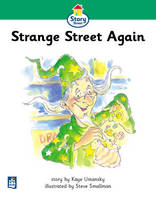business EFL eikaiwa ES expectations kids language courses Language learning school management teaching teaching culture
by sendaiben
2 comments
The purpose of a language school
This year has given me a lot to think about with regards to Cambridge English, the language school I help run. We have been forced to make a lot of changes, closing one location, rearranging the schedule to deal with staff shortages, developing the curriculum to move towards where we want the school to be.
I have also had the chance to do a lot of teaching during the last six months, averaging around 60 contact hours a week and coming very close to burning out.
Brainstorming with other staff has given me some broad principles to follow in the future, and interestingly shows where we went wrong in the past. Some of our previous goals were in fact counter-productive and were holding us back. It has also thrown out some dilemmas that I have not completely resolved yet.
Big or small?
This is probably the first question school owners need to answer. Do you want to be a big school with multiple locations and a large staff, or a small school? We used to want to be big, but it is a horrendous amount of work to grow beyond a couple of teachers, and I am not sure that it is possible to do so without taking a considerable hit in terms of character and quality. Multiple locations means doubling up on resources, something that is almost prohibitively expensive for us (we have thousands of readers and a lot of games and toys). Moving things to where they need to be and keeping track of things is a huge headache that doesn’t exist when you are based in one place.
So, I give up. I am never going to be the CEO of a big company. My talents and temperament don’t seem to be a good fit with that. Instead, I will see how far we can take things on a more manageable scale.
Cheap or expensive?
This is another vital question, one that has become a bit of a no-brainer for us. I believe there is no future for small schools attempting to compete on price. I even feel that charging average fees is a losing proposition for us. Instead, we are going to attempt to become a boutique school, a luxury good in economic terms. As long as your market is large enough (we are in Sendai, a medium-sized city), there should be plenty of potential customers for whom quality is more important than price.
Of course, if you want to charge more, you also have to deliver results. Your classes must be purposeful and show students or their parents how they are helping them. Your school should be attractive, clean, and well-presented. You should have an effective curriculum and decent staff. Effective communication with students and/or parents is also essential.
Provided you actually deliver these things, charging more than other schools around you can be an effective marketing technique. For certain potential customers, higher prices are likely to catch their attention. Why is that school more expensive? In a lot of cases, higher prices will give an image of higher quality.
We have found that each time we raise our prices, demand also rises. Take private lessons for adults: we started at the ridiculously low price point of 8,000 a month for four classes, then raised it to 12,000, then doubled it to 24,000. Each time we raised the price, we got a wave of new enquiries.
Inclusive or exclusive?
This is something I have real trouble with. Our school has always tried to accommodate all students, regardless of their ability or temperament. We have several students with mental or emotional disabilities, and most of them have private classes at group rates because that is the most effective way to meet their needs and the needs of other students.
However, in line with the drive for quality above, I am tempted to screen students entering our school. Often when students come for trial lessons, it is very easy to tell if they are actually interested in English or not. It is also fairly easy to predict how involved their parents are likely to be, or how interested they are in the school.
Motivated students with supportive parents are easy to teach and learn quickly. This leads to a virtuous circle of achievement, where the students learn more, get more satisfaction, and are driven to learn even more.
If you eliminate the disinterested, the disruptive, the disturbed, and the less able, classes will go more smoothly and both students and teachers will enjoy them more. Students are more likely to succeed in this case, and success leads to very effective word of mouth marketing. If you also get a reputation for being selective, then that can increase interest in your school, as people always want things they can’t have.
However, is this fair? As a teacher, I feel a duty to society. If we only take students that can afford to pay elevated fees, we are depriving poorer, possibly equally motivated and able students, of the chance to study with us. If we turn away students with behavioural, emotional, or educational problems, we are discriminating against them as well. Don’t all students have the right to have access to what we can offer them?
Of course, we are a business, not a public school. We can set any policy we like, take or turn away any customer, and set fees at any level.
One way to square this circle is to provide options to accommodate different students. We currently have half a dozen students who are studying for free, because their family circumstances due to divorce, unemployment, or the after effects of the earthquake means that they would not have been able to remain with us as paying students. We also have students who receive private lessons for the price of group ones because they are autistic and do not work well with others: we didn’t feel it was fair to charge them more because of their disability. Perhaps we can extend this model into the future, providing academic scholarships for promising students who wouldn’t otherwise be able to afford the fees and continuing to cater to non-standard students.
So, what is the purpose of a private language school?
Is it solely a profit-making enterprise or is there some obligation to serve the community? How do you address these three issues? I would be very interested to hear from other owners and teachers in the comments below.
business curriculum EFL eikaiwa ES expectations presentations school management teaching technology testing theory
by sendaiben
4 comments
Another view of the future of education?
The latter half of this video may be of interest to teachers (the first half is just generally interesting, particularly if you are a closet entrepreneur wannabe). Similar to Ken Robinson’s famous talks on the same subject.
conference curriculum EFL eikaiwa ES kids Language learning Oxford Reading Tree presentations Reading school management
by sendaiben
leave a comment
Oxford Teaching Workshop and ER Seminar in Okayama
This morning went very well, thanks to everyone who came along! You can find the powerpoint file in .pdf format below, and I should have the video up once I get it back from the kind folks at OUP.
Next stop is the ER Seminar in Okayama next Sunday, where I’ll be presenting about how to expand an extensive reading program beyond a single class. Hope to see you there!
PDF file below:
Reading in Class Open the Door
EFL eikaiwa ES levity listening online resources teaching Uncategorized
by sendaiben
leave a comment
A Christmas ‘Treat’
Merry Christmas! Here is a link from my distant past that you may or may not enjoy (warning: it’s fairly catchy):
http://web.archive.org/web/20051119202358/http://www.human.gr.jp/matu/eigo/uta1/
Created by the very talented Mr. Matsumoto, who also taught me almost everything I know about teaching English in elementary schools.
Tragically my recording career begins and ends with this track.
curriculum EFL eikaiwa ES kids language courses readers Reading school management teaching Uncategorized
by sendaiben
2 comments
Story Street
I had a chance to check out Story Street (from Longman) this week. As you may know, I am a huge fan of reading and we use a huge range of readers in our kids classes, but I never had the chance to look at it properly before (I had glanced through it in a bookshop once, but didn’t really like the illustrations).
I was pleasantly surprised. I tried levels 1, 3, 6, and 10 and they were well-received by students. In fact, our students rated them higher than the Follifoot Farm readers (my personal favorite for making the jump from phonics to reading). Of course, FF is a series designed to provide decoding practice, so it is perhaps unfair to compare it to a full on kids reader series, but still, I was taken aback.
The stories are fun, the characters and situations develop as the levels progress, and the steps between levels are handled well. In fact, I liked the series so much that we’ll be introducing it to our classes as supplementary reading material.
There are a few things I don’t like:
-there are not enough books at each level, which means that we couldn’t use it as our main reading resource
-there are no word counts available, either on the books nor from the publisher
-the list of books for each level on the back of the books is wrong, as certain titles are out of print (this will be a problem when sharp-eyed kids notice that they haven’t read ‘all the books’)
None of these are huge problems, but they do mean that Story Street comes across as a little less polished than, say, the Oxford Reading Tree. Still, I’m looking forward to having our students explore the Street in the new year. I’ll report back after we’ve used it for a while.



